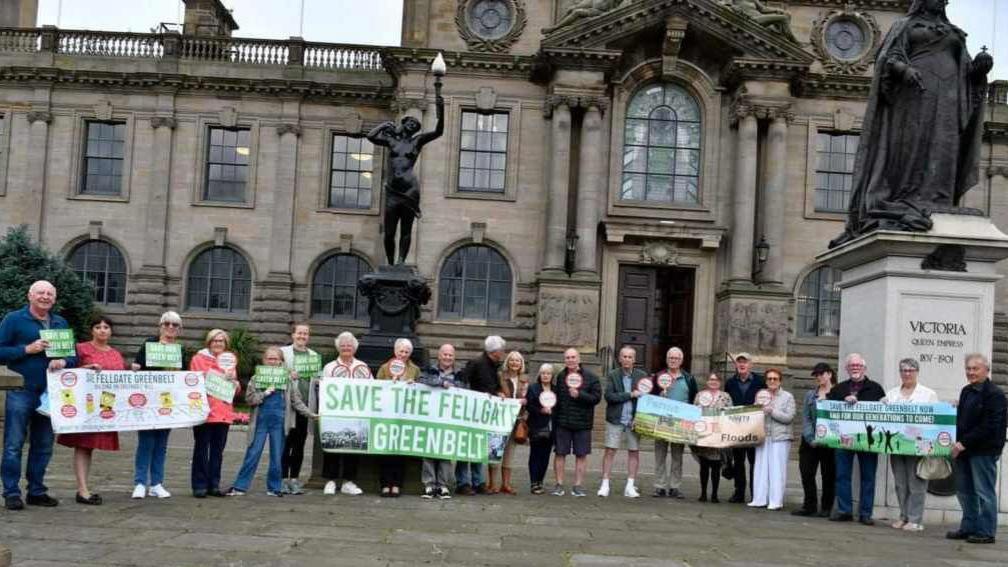Fear over wildlife impact of green belt house plan
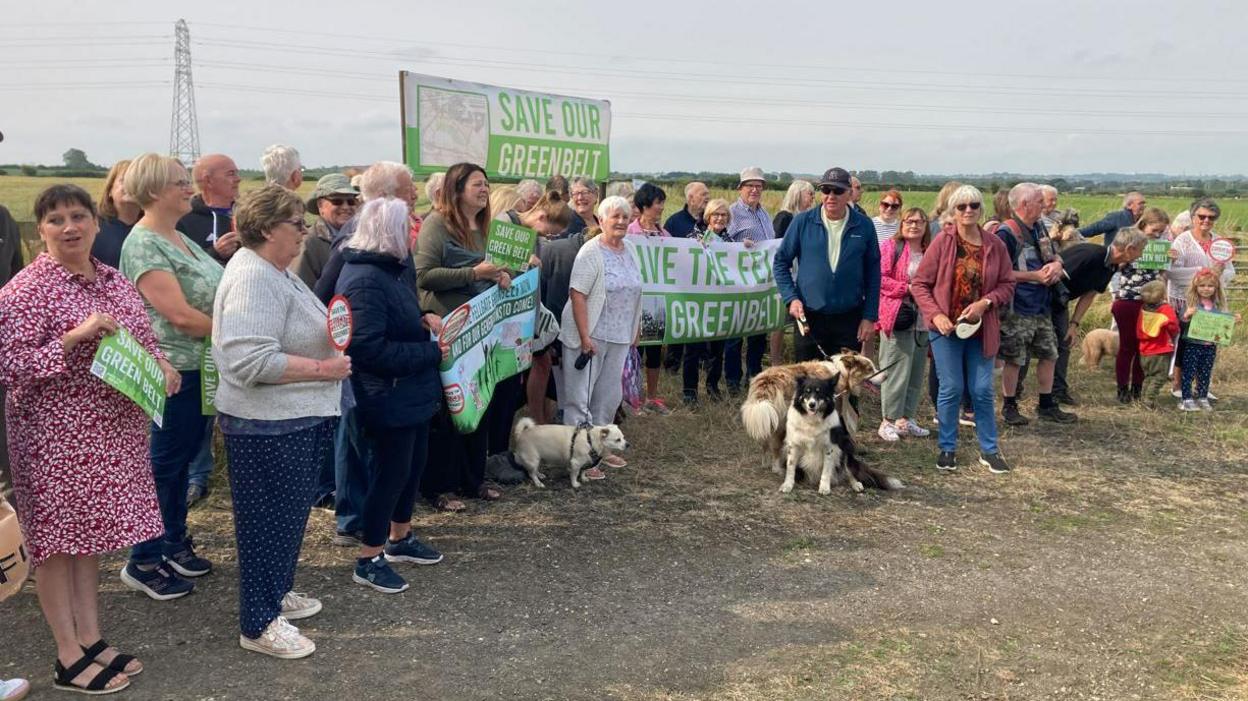
Campaigners are protesting against plans to build about 1,200 houses on green belted farmland
- Published
Plans to build hundreds of homes on green belt land will be disastrous for wildlife and damage local communities, residents have said.
South Tyneside Council wants to remove green belt restrictions from an area of farmland on the outskirts of Jarrow to build about 1,200 homes.
The row comes as the government consults on wider plans to speed up house building and reform planning rules.
The council said if the plans were approved the development would create "good quality green and blue infrastructure" and "improve biodiversity and habitat connectivity".
Dave Green, from Save the Fellgate Green Belt, said: "We know there is a need for building within the borough but there are brownfield sites available and for some reason the council are wanting to take these beautiful landscapes from these residents."
Campaigners argue the road network is not sufficient to support additional housing and the fields play an important role in protecting the neighbourhood from flooding.
Horses are kept on the land and riders claim the development would leave the animals homeless and damage the equestrian community.
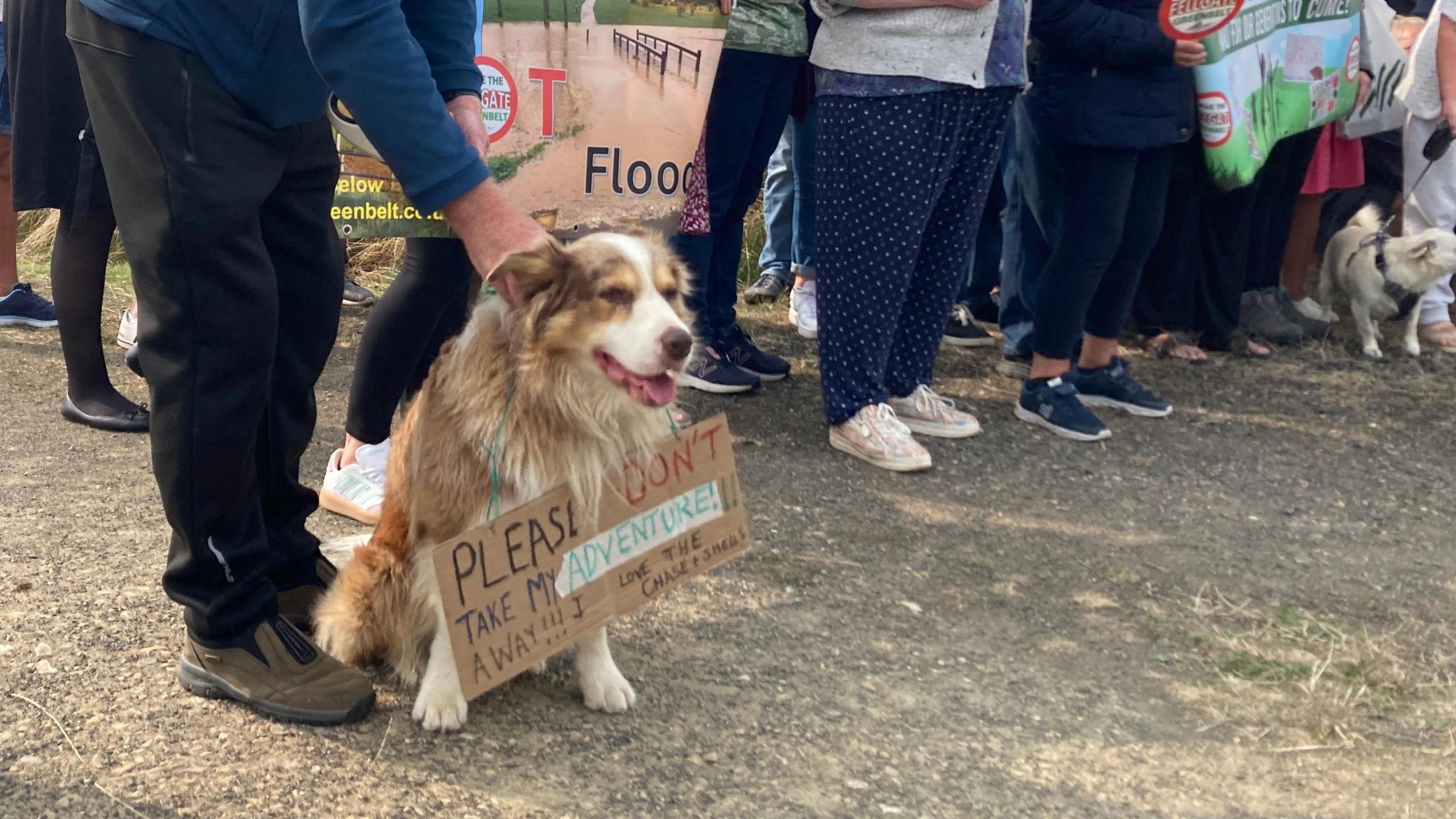
The fields are used by dog walkers and those who ride horses
Green Party Councillor Rachael Taylor said the council needed to "do better" to protect the green belt.
"We have declared a climate emergency and we need to be taking steps to show that we really mean what we say," she said.
Labour councillor Geraldine Kilgour, who is campaigning to stop the development, said the group was considering getting legal advice on how to protect the land.
Councillor Margaret Meling, lead member for economic growth and transport at Labour-run South Tyneside Council, said a number of "minor modifications" to the plans had been made after a public consultation.
She said the housing estate would be supported by an infrastructure delivery plan, which would detail how services such as school places and health provisions would be provided to the area.
"We continue to prioritise and actively promote the development of brownfield sites first, but there is an acute undersupply of land from non-green belt sources, so we have had to look at all options to accommodate sustainable development," she said.
"In this version of the plan, it is proposed that just 5% of land is removed from the green belt."
'Play their part'
The Labour government wants to accelerate house building and make it easier to build on what it describes as "low-quality green belt land".
Ministers are also consulting on compulsory housing targets for local areas.
In the north-east of England the proposed annual target would rises from about 6,123 to 12,202. In South Tyneside, it would increase from 306 to 706.
A Ministry of Housing, Communities & Local Government spokesman said: "All areas of the country must play their part to help us deliver 1.5 million new homes in the next five years".
He added approved developments must "deliver for communities and nature".
Follow BBC North East on X (formerly Twitter), external, Facebook, external and Instagram, external. Send your story ideas to northeastandcumbria@bbc.co.uk.
Related topics
- Published20 August 2024
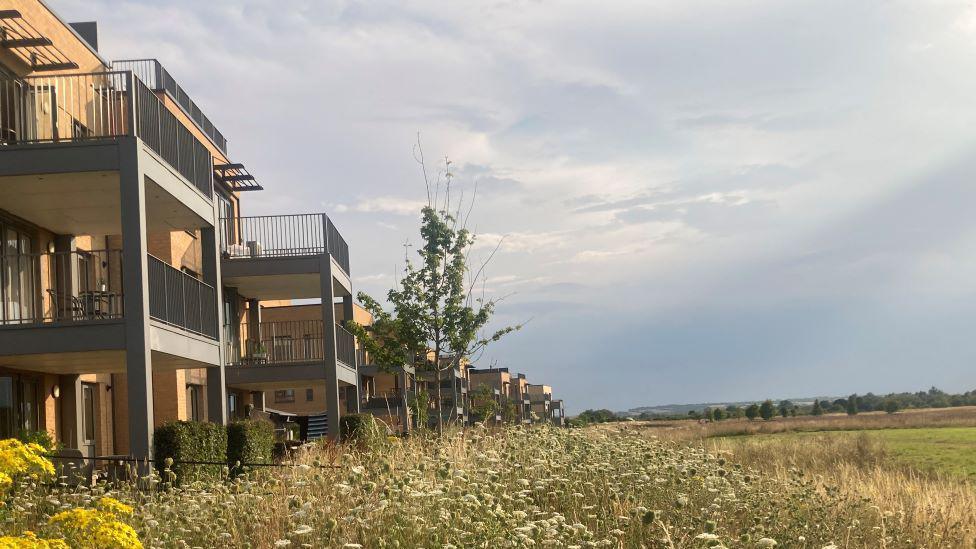
- Published30 July 2024
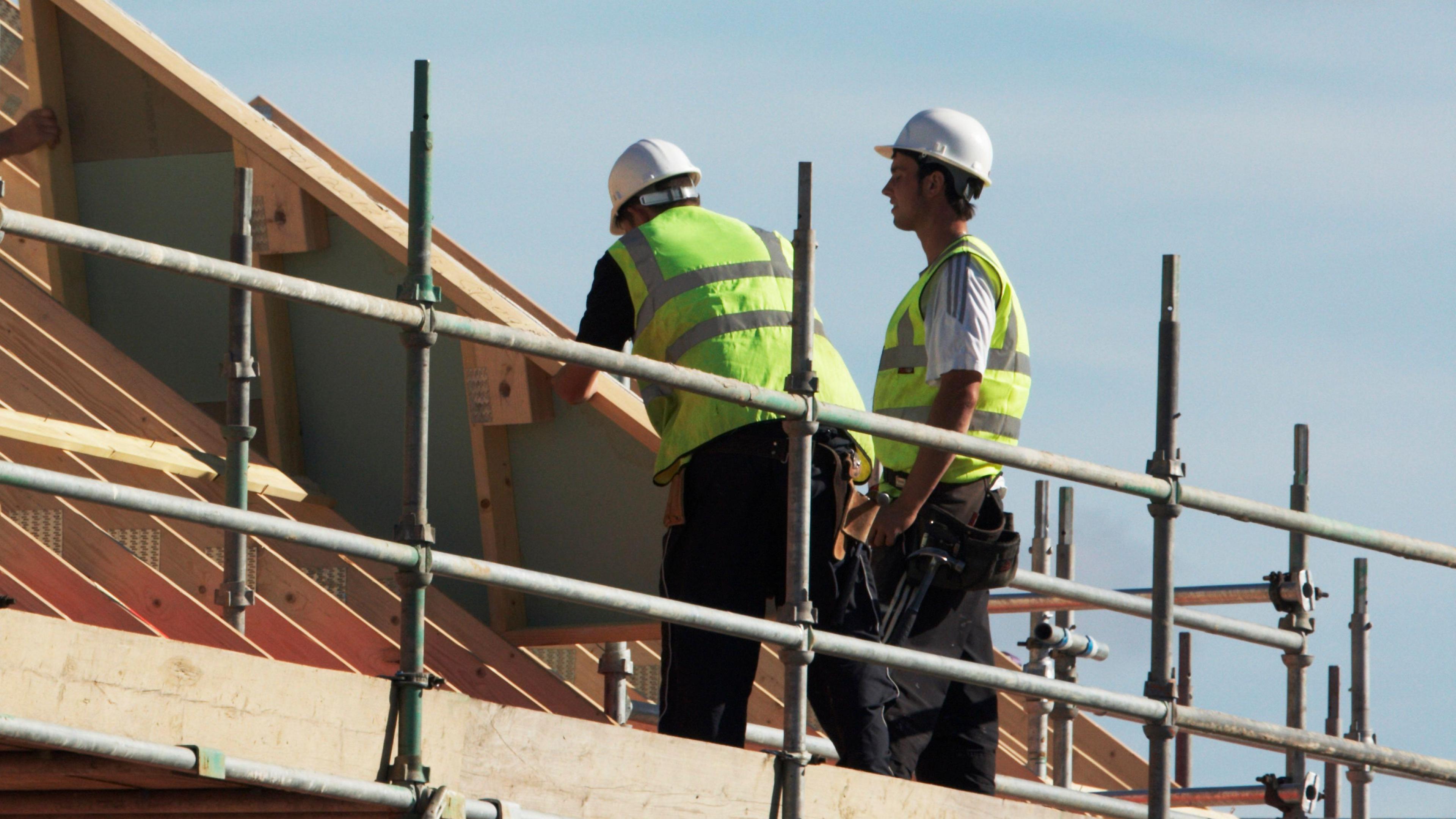
- Published31 July 2024
